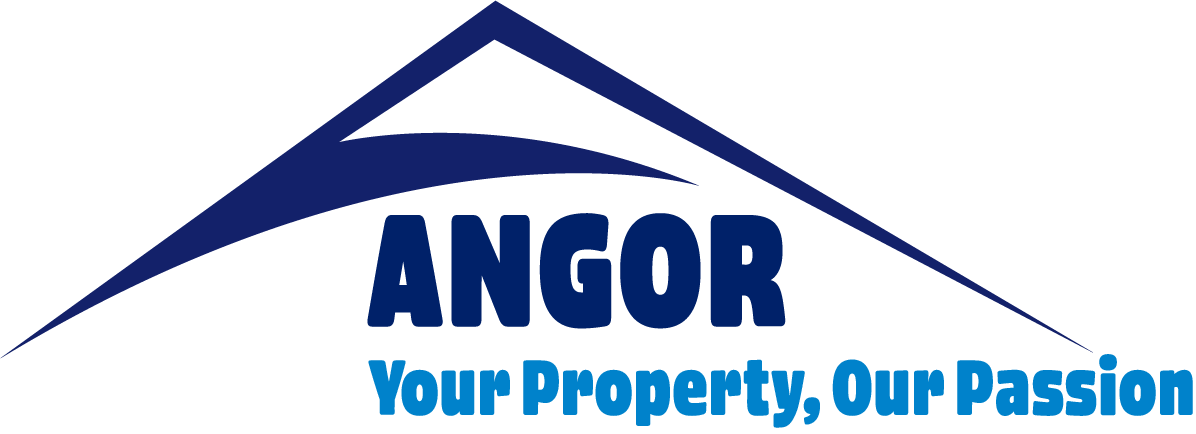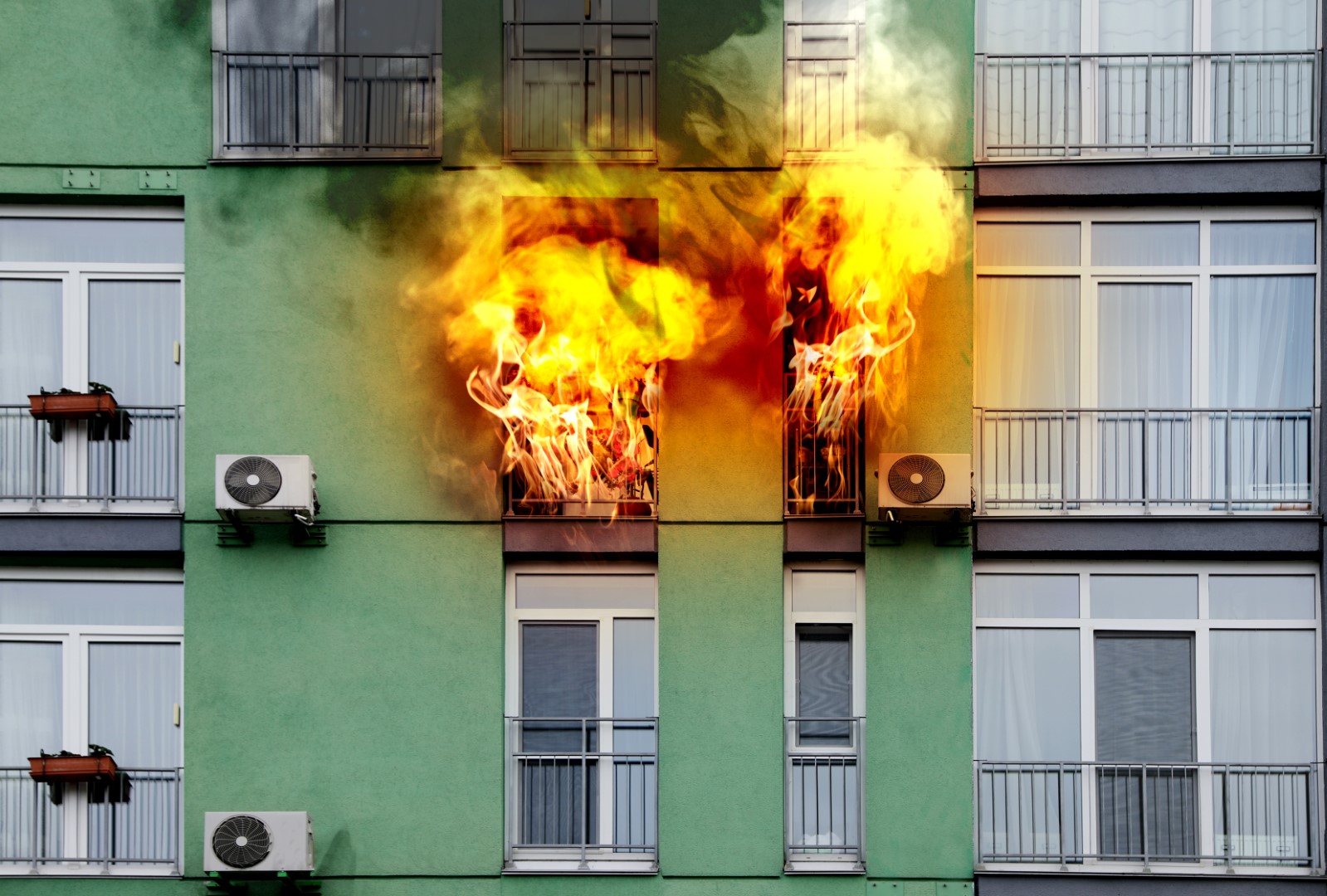Managing Health and Safety Risks in Community Schemes
Picture it! Somebody in apartment 3b forgot about their pot of hot oil on the stove. It can happen to the best of us. But the stove was on, and that oil steadily getting hotter when they popped out to grab some supplies from the local shop. The oil overheated to combustion point and before anyone knew it there was a raging kitchen fire that soon spread, engulfing the entire kitchen floor. The Body Corporate had been discussing the installation of smoke detectors, but it was still on the to-do list.
Luckily a neighbour noticed the black smoke pouring out of an open window and called the fire department. But by the time the fire was put out the entire apartment, and its contents were damaged, and the integrity of the apartments on all sides needed to be verified by structural engineers. A much bigger sum of money than what a few fire detectors would have cost.
It is crucial to recognize and address potential health and safety risks that can arise in shared living schemes, because accidents can happen at any time, at any place, and even to the most competent of people. Not only that, but it is also a legal compliance issue for residential estates in terms of the Occupational Health and Safety Act, Act 85 of 1993.
Bodies Corporate are not exempted from the OHS Act and must ensure compliance with statutory and common law obligations, ensuring that the overall property is maintained and repaired so that it remains in safe order for owners, visitors, contractors, and employees.
Sectional Title Schemes and Bodies Corporate rely on a Board of Trustees headed by a Chairperson to oversee and maintain health and safety requirements for all common areas. Unit owners are responsible for maintaining their own apartments.
But even work done in a private capacity can have an effect more widely, it is best to have a permission/ permit process in place, especially around the use of hazardous substances, working at heights, flammables, grinding, welding, or the use of any other dangerous machinery. So, it is good practice for the Body Corporate to require any private construction work to be signed off and safety checked ahead of time.
Common areas and items where OHS compliance is paramount, include:
- Signage
- Lifts
- Pools and braai areas
- Firefighting equipment
- Compliance certificates
- Cleaning and other contractors
- Public liability cover
Obligations Under the Law
Under section 16.1 of the Act, the Chairperson is considered the CEO, which means that they take on the role and responsibilities associated with it, making them liable for health and safety for the Sectional Title Scheme. If the Sectional Title Body Corporate hires a contractor, they are subject to the same OHS requirements as any other employer as well. These responsibilities can be delegated (in writing) but the Chairperson still remains accountable.
The main criteria you should have in place includes:
- A baseline risk assessment of the Scheme, and an up-to-date OHS File, with policies, plans, and procedures outlines, must be available on-site.
- Proof of employee health and safety training.
- A contractor management plan and process.
- A waste management plan.
- An emergency preparedness and response plan.
- Any risk to the health, safety and well-being of employees, and any other persons who could be affected by the Body Corporate’s activities, must be assessed.
- Effective planning, organisation, control, monitoring and review of both preventive and protective measures.
- Written health and safety policies.
- Access to health and safety advice from competent entities.
- Proof of consultation with employees (including casual labour, general labourers and construction workers) regarding any hazards and risks at work, in addition to providing preventative and protective measures to eliminate, minimise or manage risks.
- The Section 37.2 Health and Safety Agreement must be utilised if contractors are hired under Sectional Title Schemes. It is a legally binding contract between the customer and their contractor that specifies the terms and circumstances under which the contractor will do work or offer services. Independent contractors hired by the Body Corporate to operate on the common property can be bound by the contract to comply with all applicable OHS legislation, but it is the Chairperson’s (16.1) job to make sure that all health and safety procedures are followed by all parties involved.
In short, as a member of the Board of Trustees, or the Chairperson, do you have proper health and safety checks and documentation in place? Moreover, how is any private construction and repair work handled within private units? Most Homeowner’s Associations will have a process in place for notification and approval, even when the work is being done within a privately owned space within the Residential Scheme.
By ensuring that a property Scheme complies with the law, Bodies Corporate minimise the risk of possible legal liabilities, penalties, and fines. So, it’s really in your best interests to ensure you have yourself properly covered in this regard.
Regulations aside, being prepared and ready to handle the most common problems just makes good sense. Let’s explore some common health and safety risks in shared living communities and discuss strategies to mitigate them effectively.
Fire and Electrical Hazards
One of the most critical health and safety risks in shared living communities is the threat of fires. With multiple occupants in close proximity, a small fire can quickly escalate and endanger lives. Proper fire safety measures should be implemented, including:
Fire detection and alarm systems: Install smoke detectors, heat sensors, and fire alarms throughout the premises and especially in high-risk areas to ensure early detection and rapid response to any potential fire incidents.
Fire extinguishers and suppression systems: Place fire extinguishers in easily accessible locations and consider installing automatic sprinkler systems in high-risk areas like kitchens and communal spaces.
Clear evacuation plans: Develop and regularly communicate clear evacuation plans to all residents, highlighting escape routes, assembly points, and emergency contact information. Make sure every new resident gets a hardcopy and digital version of this information, and that emergency details are also put up visibly in common areas.
Regular maintenance and inspections: Conduct regular inspections of electrical systems, heating equipment, and fire escapes to identify and address any potential fire hazards promptly.
Faulty wiring, overloaded circuits, or improper use of electrical appliances can lead to electrical shocks, fires, or even electrocution. Checks should be made as part of your maintenance management plan.
Missing or non-functional smoke detectors, fire extinguishers, or fire escape routes can increase the risk of fire incidents and endanger the lives of residents.
Water Safety
For properties with water storage and private water supply or boreholes, this is also a need-to-know. Contaminated water sources, lack of proper water treatment, or inadequate maintenance of plumbing systems can increase the risk of waterborne diseases.
Slips, Trips, and Falls
Uneven flooring, loose carpets, cluttered common areas, or inadequate lighting can increase the risk of slips, trips, and falls, potentially resulting in injuries.
Sanitation and Hygiene
Maintaining adequate sanitation and hygiene standards is crucial in shared living communities to prevent the spread of illnesses. Some measures to consider include:
- Cleanliness protocols: Establish clear guidelines for communal areas, and ensure they are regularly cleaned and disinfected.
- Waste management: Proper waste disposal systems should be in place to prevent pest infestations and foul odours. Regular garbage collection and recycling initiatives can help maintain a clean environment
- Pest control: by managing regular waste removal, and addressing any pest infestations promptly, as well as educating residents about things like food storage and disposal.
- Contaminated water sources, lack of proper water treatment, or inadequate maintenance of plumbing systems can increase the risk of waterborne diseases like Legionnaires’ disease or gastroenteritis.
Security and Personal Safety
Residents’ personal safety is of utmost importance in shared living communities. To minimize risks, consider implementing the following measures:
- Access control: Establish secure entry systems, such as key cards or digital locks, to restrict access to the premises and ensure only authorized individuals can enter.
- Lighting and surveillance: Well-lit common areas and the presence of surveillance cameras can act as deterrents to potential criminal activity and increase overall safety.
- Emergency communication: Install emergency communication systems, such as intercoms or panic buttons, to allow residents to quickly seek assistance in case of an emergency.
- Resident screening: Implement a thorough screening process for prospective residents to ensure that individuals with a history of violence or criminal behaviour are not admitted.
Insufficient access control, lack of surveillance systems, or inadequate lighting can make the shared living community vulnerable to theft, vandalism, or other criminal activities, which quickly devalues the property.
This is by no means everything, but it does cover most of your bases. Although it may seem like a lot to consider, once you have your risk assessment and policies in place, it becomes a lot easier (and safer) to handle. And let’s face it, a sound safety and risk management approach promotes clarity, trust, strengthens the estate brand, and affects its overall value. Well-run Schemes will add this to their urgent list if they haven’t done it already.
By focusing on these vital aspects, shared living communities can provide residents with a secure, safe, and healthy place to call home.
To contact ANGOR with any questions, or for financial and property management advice, please go to: https://www.angor.co.za/
What is the Maintenance, repair and replacement plan (10 year plan)?
Gas safety | How to switch to gas as a cheaper energy source
Environmental Concerns: Managing Waste Disposal and Recycling in a Sectional Title Scheme

